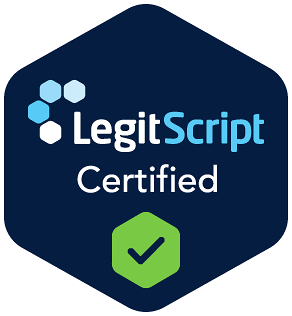Article updated October 26, 2024
With all the recent advances in cosmetic dermatology, it’s difficult to keep up with all the new treatments available to you. You may have heard of laser resurfacing already, but did you know there are more than one type of laser resurfacing treatments? In this article, we’ll dive into what types of laser resurfacing treatments exist, and what the differences are.
What is Laser Resurfacing?
As the name implies, laser resurfacing is a rejuvenation procedure that uses laser beams to refine the facial skin tissue. There are two main types of laser resurfacing treatments:
- Ablative Laser Resurfacing.
This type of laser resurfacing involves carefully removing the epidermis, a thin outer layer of skin on our bodies. The laser also simultaneously heats the underlying layer, called the dermis, causing the skin to produce more natural collagen. Collagen is an important protein responsible for maintaining suppleness and texture in our joints and skin tissues. As the epidermis heals itself, the treated area of the skin grows back tighter and smoother than before. The two most common ablative laser resurfacing types are carbon dioxide (CO2) lasers and erbium lasers. These are sometimes used together in combined therapy. Here at DermaBlue, we use CO2 lasers! - Non-ablative Laser Resurfacing:
Also known as light source resurfacing, this method also triggers collagen growth.This approach requires little down time, as there’s no “ablating” happening—meaning it’s not as aggressive, and doesn’t remove layers of skin. However, the results are not as noticeable as ablative treatments. The most commonly used types of non-ablative laser resurfacing are erbium, intense pulsed light therapy, and pulsed-dye laser therapy.
These two types of laser resurfacing share one thing in common: they are delivered using a fractional laser.
What Does Laser Resurfacing Treat?

The goal of laser resurfacing is primarily to reduce the appearance of wrinkles, fine lines, and uneven skin tone. It is a great solution for anyone who wishes to treat:
- Wrinkles and fine lines
- Spots
- Uneven textures
- Splotchy skin patches
- Sun-damage
- Acne scarring
What are the Risks with Laser Resurfacing?
Ablative laser resurfacing comes with a higher amount of side effects than non-ablative treatments. Why? Because ablative laser resurfacing requires us to “ablate”, or remove layers of skin. A few of the common side effects of the procedure include several days of pain, redness, itching, and swelling around the treated areas as the new skin regrows.
You will need to avoid going out into the sun after your laser resurfacing treatment to prevent any damage to your skin while its various layers heal. Some of the less common (but more serious) side effects include acne, scarring, changes in skin color, and even infection if not properly cared for during the healing process.
As with all cosmetic procedures, you will need to consult with your dermatologist or primary care physician to see if there’s any risk of complications before deciding to go with a laser resurfacing treatment.
How to Prepare for Your Laser Resurfacing Appointment
As we mentioned before, you will need to have a consultation with a laser resurfacing specialist before you commit to treatment. They will examine your medical history with you, conduct a physical exam, and tell you what to expect during your treatment—as well as provide a long list of things to do or not to do before the treatment. They will likely recommend the following do’s and don’ts:
- Avoid taking certain medications
- Avoid direct, unprotected sunlight
- Quitting smoking
Your provider will walk you through the treatment and send you home with a checklist to ensure you’re ready for your treatment and that it has the best possible outcome.
What Does Treatment Look Like?
A typical ablative laser resurfacing treatment will look something like this:
- Your skin will be numbed with medication or you will be sedated, in some cases
- A fractional laser will be beamed directly at your skin, burning off the outermost layer of skin in the target area
- Your provider will go over each area once, or until the dermis is exposed and ablation is complete
The whole procedure typically takes between 30 and 120 minutes, depending on the size and scope of the procedure.
Recovery for ablative laser resurfacing usually takes up to a month, as the skin must regrow. During this time, you will need to keep the area clean with an ointment and avoid direct sunlight and areas that may expose you to infections, like swimming pools. Because of this intense recovery, many people consider non-ablative laser resurfacing. The downtime is minimal. Patients can expect to return to normal activities the next day, but may need more than one treatment to get the desired results.
At DermaBlue, we offer traditional ablative laser resurfacing with our CO2 laser, as well as eCO Tone™. If you have any questions, we’re always happy to help! Schedule a consultation with us online to determine if laser resurfacing is a good option for you and your unique skincare needs.








